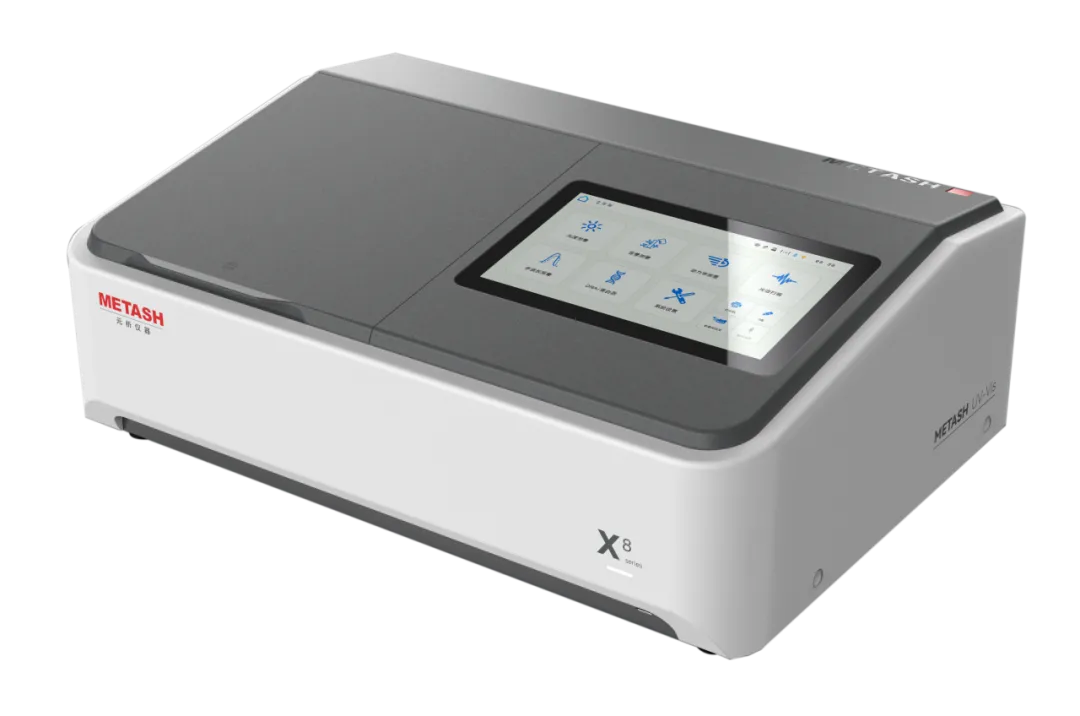Critical Need for Phosphate Control
In boiler and cooling water systems, the concentration of total phosphate plays a pivotal role in maintaining system integrity and operational efficiency. Phosphate is often added as a corrosion inhibitor, but its concentration must be carefully managed. Excessive phosphate can lead to scale formation, reducing heat transfer efficiency and potentially causing system blockages. Conversely, insufficient phosphate may fail to protect the system from corrosion, leading to costly repairs and downtime. Therefore, achieving and maintaining an optimal phosphate concentration is essential for the longevity and efficiency of these systems. In this blog post, Metash, a high quality uv visible spectrophotometer manufacturer, will share the precise control of total phosphate in boiler/cooling water with double beam uv-visible spectrophotometry.
Power of Double Beam UV-Visible Spectrophotometry
The double beam UV-visible spectrophotometer is a sophisticated analytical tool that offers unparalleled precision and reliability in measuring total phosphate concentration. This instrument operates by measuring the absorbance of light at specific wavelengths, which correlates to the concentration of phosphate ions in the water sample. The double beam design provides several advantages over single beam spectrophotometers. It includes a reference beam that continuously monitors and corrects for any fluctuations in light intensity or background interference, ensuring stable and accurate measurements even in complex water matrices.

Calibration: Foundation of Accurate Measurement
Calibration is the cornerstone of accurate phosphate concentration measurement using a double beam UV-visible spectrophotometer. A series of phosphate standards with known concentrations are prepared and measured to create a calibration curve. This curve is then used to determine the phosphate concentration in unknown samples. The calibration process should be performed regularly to account for any potential instrument drift or changes in the water matrix. Additionally, the use of high-purity reagents and rigorous quality control measures during calibration are crucial to ensure the reliability of the results.
Sample Preparation and Analysis: Key Steps for Reliable Results
Proper sample preparation is essential for obtaining accurate and reliable phosphate concentration measurements. Water samples should be collected in clean, acid-washed containers to avoid contamination. The samples are then filtered to remove any suspended particles that may interfere with the spectrophotometric measurement. Once prepared, the samples are analyzed using the double beam UV-visible spectrophotometer. The absorbance of the sample is measured at the appropriate wavelength, typically around 880 nm for phosphate, and the phosphate concentration is determined by comparing the absorbance to the calibration curve.
Real-Time Monitoring and Automation: Enhancing Precision and Efficiency
For continuous and precise control of phosphate concentration, integrating the double beam UV-visible spectrophotometer with real-time monitoring systems is highly beneficial. Automated sampling and analysis systems can be set up to periodically measure phosphate levels and adjust the phosphate dosage in real-time. This level of automation not only enhances precision but also reduces the need for manual intervention, making the process more efficient and reliable. Real-time data can be fed into a control system that adjusts the phosphate dosage based on the measured concentration, ensuring that the system remains within the desired operational range.
Troubleshooting and Quality Control: Ensuring Long-Term Reliability
Despite the advanced capabilities of the double beam UV-visible spectrophotometer, occasional discrepancies may occur. Regular maintenance and calibration checks are essential to identify and address any potential issues. Additionally, quality control measures such as running duplicate samples and participating in proficiency testing programs can help ensure the accuracy and reliability of the measurements. Any deviations from the expected results should be investigated promptly to determine the cause and implement corrective actions. Keeping detailed records of calibration, maintenance, and measurement data can also aid in troubleshooting and continuous improvement.
Conclusion
Precise control of total phosphate concentration in boiler and cooling water systems is vital for maintaining operational efficiency and preventing costly issues such as scale formation and corrosion. The double beam UV-visible spectrophotometer offers a reliable and sensitive method for monitoring phosphate levels. By following proper calibration, sample preparation, and real-time monitoring procedures, and implementing robust quality control measures, industries can achieve optimal phosphate concentration control, ensuring the safe and efficient operation of their water systems. This approach not only enhances system longevity but also contributes to overall operational efficiency and cost savings.
www.metashcorp.com
Metash

